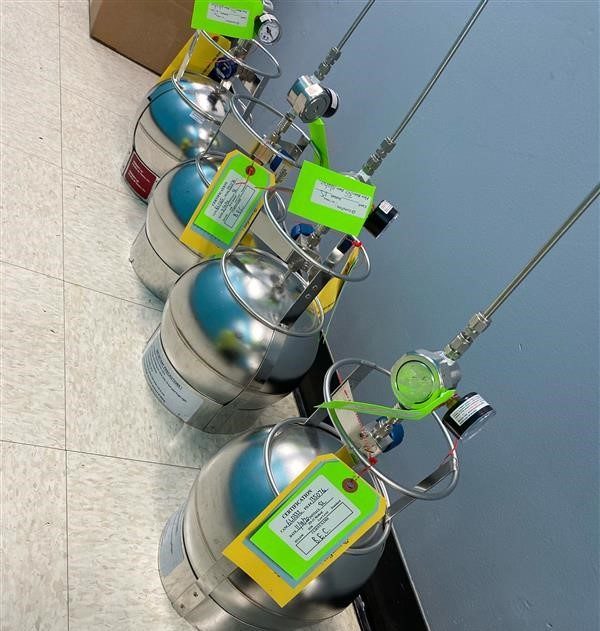 Why is indoor air sampling necessary?
Why is indoor air sampling necessary?
Indoor air sampling is conducted to evaluate for potential volatile organic compound (VOC) within an occupied building. VOCs may be introduced into indoor air by direct sources located inside of a building and/or from the migration of chemical vapors from the subsurface into the building. These chemicals can pose a risk to human health if not addressed. California EPA Draft Guidance Screening and Evaluating Vapor Intrusion (“Draft Guidance”) emphasizes the need to conduct indoor air testing and de-emphasizes reliance on subsurface vapor data and modeling to evaluate sites that have had known or potential VOC releases. As a result, indoor air testing is becoming a common requirement during Phase II Site characterization activities.
When should indoor air be evaluated?
According to the Draft Guidance Indoor air should be evaluated when:
- The building is directly above a release of contamination;
- The building is near a significantly contaminated groundwater plume;
- A groundwater plume is less than 5 feet below the building;
- The building is connected to conduits intersecting significant contamination; or
- The building has been screened by sampling other media (e.g. soil vapor) and reported concentrations above health risk levels.
**Once one or more of these situations have been identified, indoor air samples should be collected and evaluated**
How to Conduct Air Sampling:
- Conduct an evaluation of the interior of the building. Locate any potential sources (e.g. cleaning agents, chemicals, paints, etc.) and if possible, remove them from the building 24 to 72 hours before sampling.
- Field screen the building for vapor entry points with a device that can detect COCs to low levels (e.g. parts per billion by volume) such as a Photoionization detector (PID).
- Conduct evaluation of the surrounding area for potential outdoor sources (e.g. a nearby street or highway with traffic, a swimming pool, a gas station, etc.).
- Select three (3) locations for indoor air samples – within primary living/work areas, near identified vapor entry points, or near suspected hotspots. Set passive air sampler to have a sampling duration of 24 hours for residential exposure and eight hours for workplace exposure. Sampling should be conducted in accordance with the VIG (DTSC, 2011a).
- Select three (3) or more outdoor locations – not influenced by site contamination (e.g. upwind and away from release area). Sampling should be conducted in accordance with the VIG (DTSC, 2011a).
- Collect subslab samples co-located with indoor air samples within 48 hours of indoor air sampling. Subslab samples should be collected in accordance with the Active Soil Gas Investigations Advisory (CalEPA, 2015). If subslab sampling is not feasible, exterior soil gas can be considered.
- Submit all samples to a certified laboratory and verify that the laboratory reporting limits are below regulatory screening levels.
- Evaluate temporal variability – conduct one (1) or two (2) more sampling events, at least one during a different season, one event should include HVAC-Off and HVAC-on.
How To Evaluate Results:
Estimate and Characterize the current vapor intrusion risk using maximum indoor air concentrations. Identify and address any indoor/outdoor sources and preferential pathways.
The following paths should be followed based on risk and hazard categorization:
- “Low risk” – no response action
- “Moderate risk” – Determine appropriate action which may include, additional investigation, monitoring, redefine risk assessment, mitigation (installation of a vapor barrier or positive displacement system) and or remediation (soil vapor extraction, groundwater pump and treat, dual phase extraction)
- “High risk” – mitigation or remediation response action is needed.
Final Thoughts
The above indoor air sampling process is in general accordance with the DTSC Draft Supplemental Guidance: Screening and Evaluation Vapor Intrusion. Prior to indoor air sampling, it may be recommended to perform other site characterization activities. These other activities may include soil gas, groundwater and/or subslab sampling and can help estimate future vapor intrusion risk.
Bowyer Environmental Consulting has extensive experience in assessing and remediating various properties affected by indoor air, soil gas, sub-slab, and groundwater impacts. In addition, BEC has over 30 years of experience working with State regulators on behalf of a wide variety of residential and commercial properties, to help clean up the environment while minimizing impacts to existing sites. For further information or technical consulting, feel free to call us at (877) 232-4620 or email us at admin@bowyerenvironmental.com.

